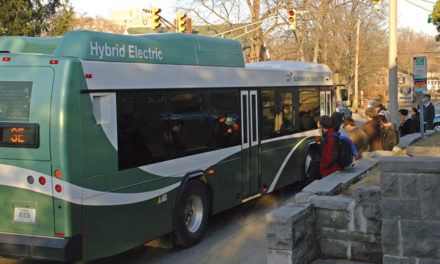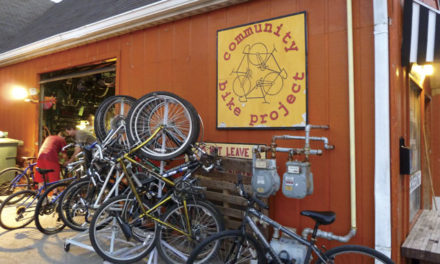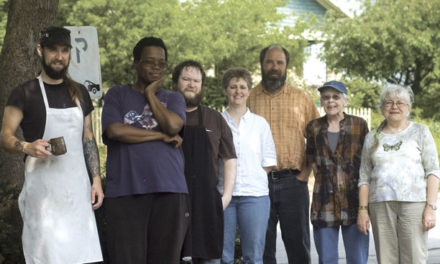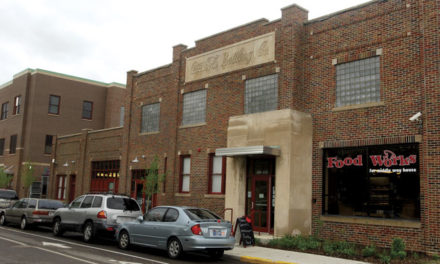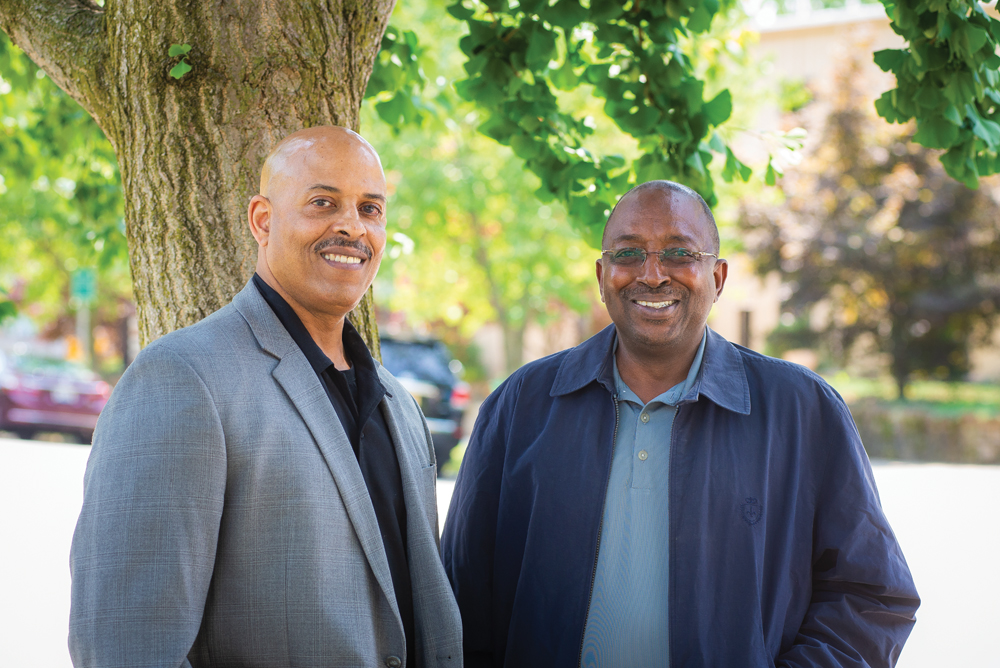
(l-r) William Hosea and Jim Sims. Photo by Rodney Margison
BY PETER DORFMAN
At 4.3 percent of the population, Bloomington’s African-American community is small, and from the outside it may appear to have a singular voice. But within it, there are diverse perspectives, expressed by a multiplicity of organizations and leaders. Not unexpectedly, those voices occasionally clash, and they clash with others who claim to speak for the black community, such as some white allies.
Recently, a new coalition of leaders has emerged to help clarify issues that uniquely affect the local black community. The Bloomington Black Strategic Alliance (BBSA), formed in late 2017, has no charter or formal structure, but it sponsored its first public event in February. The BBSA State of the Black Community address was delivered at City Hall in collaboration with Bloomington’s Black History Month Planning Committee.
The BBSA generated additional attention through a guest column on April 16 in The Herald-Times in which the group expressed gratitude for the support of allies but asserted that “black people have a unique set of lived experiences that can only be fully articulated by black people.”
The alliance’s focus is on communication among community groups, and particularly the need for black organizations to coordinate activities and eliminate duplication of effort, says Jim Sims, a BBSA founder.
Sims, who was elected to Bloomington City Council by the Monroe County Democratic Caucus in August 2017 to fill the at-large seat vacated by Tim Mayer, is Monroe County’s only elected black official. He also heads the county chapter of the NAACP and is a member of the Monroe County Black Democratic Caucus. But BBSA isn’t so much about the activities of organizations like the NAACP or the Caucus, Sims explains. It’s about issues like education, underemployment, and criminal justice that are disproportionate concerns of the black community.
The BBSA core group of eight meets bimonthly. It’s leaders purposely avoid describing those who meet as “members,” or referring to the alliance as a conventional organization. “It’s more of a collaborative,” says Stephanie Power-Carter, a professor at the Indiana University School of Education and a community leader focused on education issues.
“It’s more than just these eight people,” she stresses. “We’re each connected to eight other people, and so on.”
“We’re an active network,” suggests William Hosea, vice chair of the board of commissioners for the Bloomington Housing Authority, an executive member of the Monroe County NAACP, and president of the Black Democratic Caucus.
One of the alliance’s objectives is to steer concerned individuals facing a specific issue to the correct community organization or government office, the place where they can get the most help. “People often don’t know who to go to,” Power-Carter says. “They might not realize that their problem represents a larger issue for the black community.”
The alliance hopes to make the State of the Black Community address—loosely patterned on the Urban League’s State of Black America presentation—an annual event. This year’s address provided data on housing, employment, education, and other areas of the black experience in Bloomington. Future addresses will include an assessment of black-owned businesses, Hosea says.
While meetings are invitation-only, the alliance is working to expand its reach. “There are lots of different points of view in the black community, and we want to be inclusive,” Power-Carter says. “We don’t always have to agree.”


